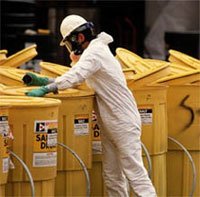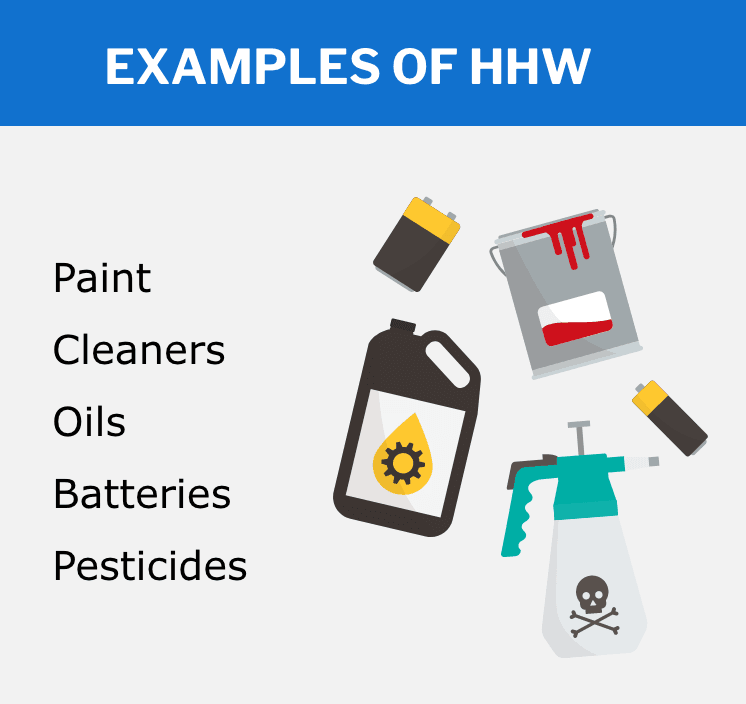ABC's of Recycling,
H – Household Hazardous Waste – It’s Too Toxic To Trash
Aug 01 2022
What is it? Why is it so bad? And where does that stuff really go when you dispose of it correctly?
Household Hazardous Waste, or HHW, is the technical name for anything too dangerous to throw in your regular trash.
Dangerous? That sounds like an exaggeration.
Not really.
HHW is labeled hazardous because these materials have harmful effects on human health or the environment. The four most common danger zones: flammable, corrosive, explosive or toxic.
Did you know there’s stuff in every home that can be labeled as one of those four hazards? Things like bathroom cleaners, auto fluids, pesticides, mercury thermometers and even old electronics can start fires, create chemical burns, and definitely pollute our soil, water, and air, if they aren’t disposed of properly.
Unfortunately, the list of hazardous items hanging around in our homes is longer than you might guess–yard fertilizers, old fluorescent light bulbs, pool chemicals, even that tiny can of leftover oil paint. It may not seem like much, but when everyone tosses a little–it adds up to a serious threat.
Despite the fact that anyone can buy these materials at their local grocery or hardware store, HHW should never be disposed of in your home garbage. Although municipal landfills do incorporate some pollution controls, they don’t include all the safeguards necessary for hazardous materials. That means hazards from household items can leach into the surrounding soil and trickle down into our groundwater.
But that’s not all.
When hazardous stuff gets accidentally mixed in garbage cans, garbage trucks, or in landfills, it can cause chemical reactions like toxic chemical clouds or even explosions! (Check out that video.) All good reasons to be careful with your hazardous waste!
Lucky for us, Illinois residents have several HHW permanent collection sites, as well as occasional one-day community collections, located throughout the state. Click here for the list of collection options. These HHW sites are specifically for residential waste (business and non-profit organizations must make special arrangement for their waste disposal.) And that’s a hard NO to pouring hazardous liquids down your drain! Never pour hazardous waste down household drains, toilets, or even into storm drains where they can directly contaminate water. Bring any liquids to a collection site in a container with a lid, please.
By the way, there are a few toxic items that HHW does NOT accept at this time (like medical sharps and smoke detectors) but SCARCE can help you find a place to dispose of these. Email us at [email protected] if you need suggestions.
After all that HHW is collected, from households and from industry sources, the waste requires special processing. Depending on the type of waste, there are a variety of ways it can be treated and stored:
- Incineration (thermal treatment) to detoxify waste and reduce the volume of hazardous waste
- Chemical treatment to reduce its hazardous nature
- Physical treatment (evaporation, filtration) to separate the hazardous material; further treatment is usually required
- Hazardous Waste Landfills to contain substances by using double impermeable liners, double leachate collection and removal systems, and groundwater monitoring systems
- Land Treatment Unit to degrade, transform, or immobilize harmful substances through the use of naturally occurring microbes and sunlight
- Injection Wells to contain toxic substances
- Recycling facility to recover and reuse components of the waste, such as the mercury in old thermometers

Whether you take your household hazardous waste to a permanent collection site or visit a special collection, plan to hand over your HHW to the pros. That way it can be handled right–to keep our air, water, and soil cleaner and safe!
